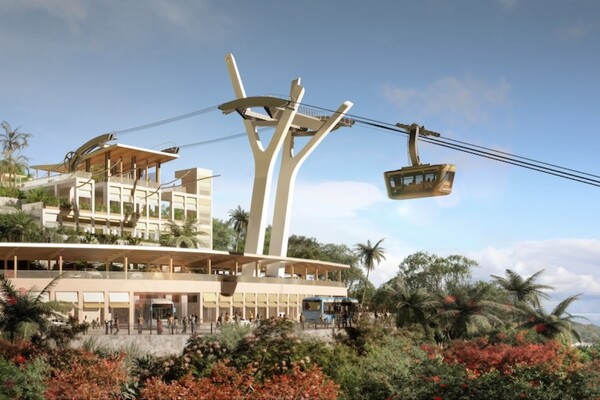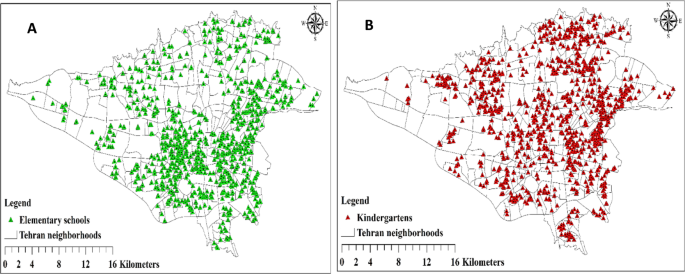Analysis of Honda’s Urban Mobility Solutions and Alignment with Sustainable Development Goals
Honda’s development of compact, portable transport solutions, from the 1981 Motocompo to the 2023 Motocompacto, demonstrates a significant evolution in engineering and a strategic pivot towards sustainable urban mobility. This report analyzes the transition from a fossil-fuel-based model to an all-electric vehicle, highlighting the alignment of the modern Motocompacto with key United Nations Sustainable Development Goals (SDGs).
Historical Precedent: The 1981-1983 Honda Motocompo
The original Motocompo was an innovative concept for its time, designed as a “last-mile” vehicle to be stored within the Honda City car. However, its design and technology presented limitations when viewed through a modern sustainability lens.
- Powertrain: Utilized a two-stroke internal combustion engine, contributing to urban air and noise pollution.
- Weight and Accessibility: Weighed approximately 100 pounds, making it less portable and accessible.
- Operational Complexity: Required a manual kick-start and utilized a carbureted engine, reflecting less efficient technology.
- Market Availability: Production was limited to 1981-1983 and was exclusive to the Japanese market.
Modern Realization: The 2023 Motocompacto and SDG Integration
The 2023 Motocompacto revives the original concept with a focus on clean energy, accessibility, and innovation, directly supporting several SDGs.
- SDG 11 (Sustainable Cities and Communities): The Motocompacto is engineered as an ideal solution for urban mobility. Its foldable, lightweight (40 pounds) design facilitates a multi-modal commute, reducing reliance on larger vehicles for short distances and thereby mitigating traffic congestion and the strain on urban infrastructure.
-
SDG 7 (Affordable and Clean Energy) & SDG 13 (Climate Action): The vehicle’s all-electric powertrain represents a critical shift to clean energy.
- It produces zero tailpipe emissions, directly contributing to improved urban air quality and supporting global climate action initiatives.
- With a price point of $995, it increases the accessibility of clean energy transportation for a wider demographic.
- SDG 9 (Industry, Innovation, and Infrastructure): The Motocompacto exemplifies sustainable industrial innovation. The transition from a heavy, combustion-based scooter to a lightweight, battery-powered vehicle showcases advancements in material science, battery technology, and electric motor efficiency, fostering a more sustainable transport infrastructure.
Case Study: A Synthesis of Heritage and Sustainable Progress
A recent auction listing featuring a 1983 Honda City Turbo II paired with a new, color-coordinated Motocompacto serves as a powerful illustration of this technological and ideological evolution. This pairing honors the original vision of integrated transport while simultaneously delivering a substantial upgrade in environmental performance and practical utility. It effectively replaces a fossil-fuel-dependent component with a clean, efficient, and innovative solution, embodying the forward-looking principles of the Sustainable Development Goals.
1. Which SDGs are addressed or connected to the issues highlighted in the article?
The article on the Honda Motocompacto connects to several Sustainable Development Goals (SDGs) through its focus on innovative, clean, and affordable urban transportation.
-
SDG 7: Affordable and Clean Energy
The article highlights that the new Motocompacto is “powered by a battery and an electric motor.” This shift from the original’s fossil fuel-based “two-stroke powerplant” to an all-electric system directly supports the transition to cleaner energy sources for transportation.
-
SDG 9: Industry, Innovation, and Infrastructure
Honda’s revival of the Motocompo as the electric Motocompacto is a clear example of industrial innovation. The company has upgraded a past design with “an all-electric powertrain and a lighter design,” demonstrating the adoption of clean and environmentally sound technologies in manufacturing and product development.
-
SDG 11: Sustainable Cities and Communities
The Motocompacto is explicitly described as an “innovative urban-focused transport solution.” Its features, such as being able to “fold flat for storage,” its low weight, and its electric nature, are designed to address mobility challenges in urban environments, promoting sustainable transport systems.
-
SDG 13: Climate Action
By replacing a gasoline-powered two-stroke engine with a zero-emission electric motor, the Motocompacto contributes to mitigating climate change. Electric vehicles are a key strategy for reducing greenhouse gas emissions from the transport sector, which is a major focus of global climate action efforts.
2. What specific targets under those SDGs can be identified based on the article’s content?
The article’s details about the Motocompacto’s features and purpose align with specific targets under the identified SDGs.
-
Target 11.2: Provide access to safe, affordable, accessible and sustainable transport systems for all.
The article emphasizes the Motocompacto’s role as a sustainable urban transport solution. Its “lower price tag ($995)” makes it an affordable option, while its “low weight (40 pounds)” and foldable design make it accessible for last-mile commutes in cities. Its electric power source ensures it is a sustainable choice.
-
Target 9.4: Upgrade infrastructure and retrofit industries to make them sustainable, with increased resource-use efficiency and greater adoption of clean and environmentally sound technologies.
Honda’s redesign of the Motocompo embodies this target. The company has retrofitted a classic product concept by replacing the outdated, polluting “two-stroke powerplant” with a clean and efficient “all-electric powertrain.” This represents a “true upgrade in real-world utility” and a clear adoption of environmentally sound technology by a major industrial player.
-
Target 7.3: By 2030, double the global rate of improvement in energy efficiency.
The transition from a “finicky,” carbureted two-stroke engine to a modern electric motor represents a significant improvement in energy efficiency. Electric motors are inherently more efficient at converting energy into motion compared to small internal combustion engines, aligning with the goal of improving energy efficiency in technology.
3. Are there any indicators mentioned or implied in the article that can be used to measure progress towards the identified targets?
The article provides specific data points and qualitative descriptions that can serve as indicators for measuring progress toward the identified targets.
-
Indicators for Target 11.2 (Sustainable Transport):
- Cost of sustainable transport options: The article explicitly states the price is “$995,” which serves as a direct indicator of affordability for personal electric mobility devices.
- Availability of sustainable transport modes: The release of the Motocompacto itself is an indicator of the increasing availability of diverse, electric-powered transport solutions for urban populations.
-
Indicators for Target 9.4 (Clean Technologies):
- Adoption of clean technology in products: The central theme of the article is the switch to an “all-electric powertrain.” The existence of this product in the market is an indicator of the industry’s adoption of clean technologies.
- Improvement in product design for sustainability: The reduction in weight from “~100 pounds” for the original to “40 pounds” for the new model is an indicator of improved resource and material efficiency in design and manufacturing.
-
Indicators for Target 7.3 (Energy Efficiency):
- Proportion of vehicles using high-efficiency technology: The article’s focus on the shift from a “two-stroke powerplant” to a “battery and an electric motor” implies a move toward more energy-efficient technology. The market penetration of such vehicles would be a key indicator.
4. Summary Table of SDGs, Targets, and Indicators
| SDGs | Targets | Indicators |
|---|---|---|
| SDG 11: Sustainable Cities and Communities | 11.2: Provide access to safe, affordable, accessible and sustainable transport systems for all. |
|
| SDG 9: Industry, Innovation, and Infrastructure | 9.4: Upgrade industries to make them sustainable… with greater adoption of clean and environmentally sound technologies. |
|
| SDG 7: Affordable and Clean Energy | 7.3: Double the global rate of improvement in energy efficiency. |
|
| SDG 13: Climate Action | 13.2: Integrate climate change measures into policies, strategies and planning. |
|
Source: gearpatrol.com







